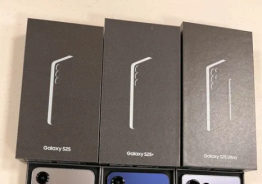Smartphone market leader Samsung unveiled its Galaxy Note 2 at the Samsung Unpacked event in Berlin earlier this year. The Note 2 hit the UK shelves on Oct. 1 and Samsung is slated to release its popular phablet in the U.S. on Oct. 24.
The Original Galaxy Note was launched in Oct. 2011, its follow-up - the Note 2 - sees many improvements and upgrades including a bigger screen and faster processor. However, is bigger better?
Here's a look at the Note 2 and how it stacks up against the original Galaxy Note.
Processor
The Galaxy Note packed in a 1.4GHz dual-core ARM Cortex-A9 processor. The Galaxy Note 2 improves on its predecessor and comes with a more powerful quad-core Exynos processor clocked at 1.6GHz.
Display
The Galaxy Note sports a 5.3-inch Super AMOLED capacitive touchscreen with 800x1280 resolution. The new Galaxy Note 2's Super AMOLED capacitive touchscreen display has been bumped up slightly to 5.5 inches. However, the Note has a higher 1280 x 800 pixels resolution at 285 ppi, compared to the Note 2's 1280 x 720 pixels at 267ppi.
The Super AMOLED technology Samsung uses not only makes the screen bright, but also provides extremely rich colors and deep blacks, giving a strong contrast ratio.
Additionally, the Note 2 has a 16:9 aspect ratio, which is an improvement over its predecessor's 16:10 ratio. The 16:9 ratio means that the phablet is much longer than it is wide, making its design apt for watching widescreen videos without any black bars.
Weight, Thickness, and Body
The Note measures 5.78 x 3.27 x 0.38 inches and weighs 0.39 pounds. At 0.40 pounds, the Note 2 is fractionally heavier than the Note, which is largely attributed to its bigger size. The Note 2 measures 5.95 x 3.16 x 0.37 inches, making it taller, narrower, and thinner than the Note.
Storage and Memory
The Note 2 also improves on storage and memory when compared to its older iteration. The Note 2 features 2GB of RAM compared to the Galaxy Note's 1GB of RAM.
The Galaxy Note was available only in 16/32GB variants. The Note 2 pips the Note in this area as well as it will be available in 16/32/64GB versions.
Additionally, the Note 2 also improves on microSD card support offered. The Note offers additional memory of up to 32GB via a microSD card, whereas the Note 2 offers up to 64GB.
Software
The Galaxy Note 2 will come with the latest Android 4.1 Jelly Bean out of the box. By contrast, the Note came pre-loaded with Android 2.3 Gingerbread and was upgraded to Android 4.0 Ice Cream Sandwich. Samsung has already started rolling out the Jelly Bean upgrade in Europe and the Note is slated for the same soon, putting both the devices at par when it comes to the OS.
Battery
A 2500mAh battery boosts the Galaxy Note, whereas a much more powerful 3100mAh battery fuels the Note 2. Samsung claims that the Note 2's battery supports up to 35 hours (2G) and 16 hours (3G), compared to the Note's up to 26 hours (2G) and 13.5 hours (3G) of usage support.
Camera
Both the phablets offer users an 8-megapixel rear-facing camera. However, Samsung has chosen to downgrade the Note 2's front-facing camera to 1.9 megapixels, compared to the Galaxy Note's 2 megapixel one.
The Note 2 is better than its predecessor, Galaxy Note, when it comes to nearly all areas. However, a downer of the phablet is that owing to is large size it is difficult for users to physically hold the device when making/receiving phone calls, and they need to use earphones.
Whether the Note 2 can repeat the Galaxy Note's success remains to be seen, but for now it seems that bigger is certainly better.
© Copyright 2025 Mobile & Apps, All rights reserved. Do not reproduce without permission.












